Amari + Other Liqueurs
A catalogue of the amari and other original liqueurs from the test kitchen. Email alex.koehl@wustl.edu for product order inquiries.Dr. Pepper fernet
Why add dozens of botanicals when you can just harness the 23 flavors of Dr. Pepper?After my first attempt at a mezcal fernet (see below), I wanted to find a method that would highlight the complexity + smoke of the mezcal better than maceration had. The solution I found was through a mix of macerating flavor concentrates and creating “essences” with the use of essential oils (in safe quantitities!!). Then a syrup made from reduced Dr. Pepper rounds out this minty, smokey, citrusy riff on the classic fernet. Other botanicals include: gentian root, bitter + sweet orange peel, balsam fir, lemon, saffron, and lemon verbena.


Lychee + Yuzu red bitter
Serving as the cornerstone for a Japanese-inspired negroni, this red bitter goes where no red bitter has gone before.After success with the mixed maceration + essence method with the Dr. Pepper fernet I wanted to take a first dive into the world of bitter aperitivo. This spin on the classic category of red bitters relies on the earthy, fruity, and citrusy combo of lychee + yuzu to bring a new level of complexity to the space. Other present flavors include: gentian root, bitter + sweet orange peel, clove, allspice, and cinnamon.
Dried Chile Trio
A briefly aged dried chile eau de vieOne of the inaugural launch products in development for Bocca al Lupo is this complex, spicy, sweet, and smokey spirit. Perfect for your next margarita, negroni, or martini–this spirit is a dried chile flavor punch. With the distillation process stripping the spice, the spice can be added in more carefully while keeping the full flavor of the ancho, guajillo, and pasilla peppers.
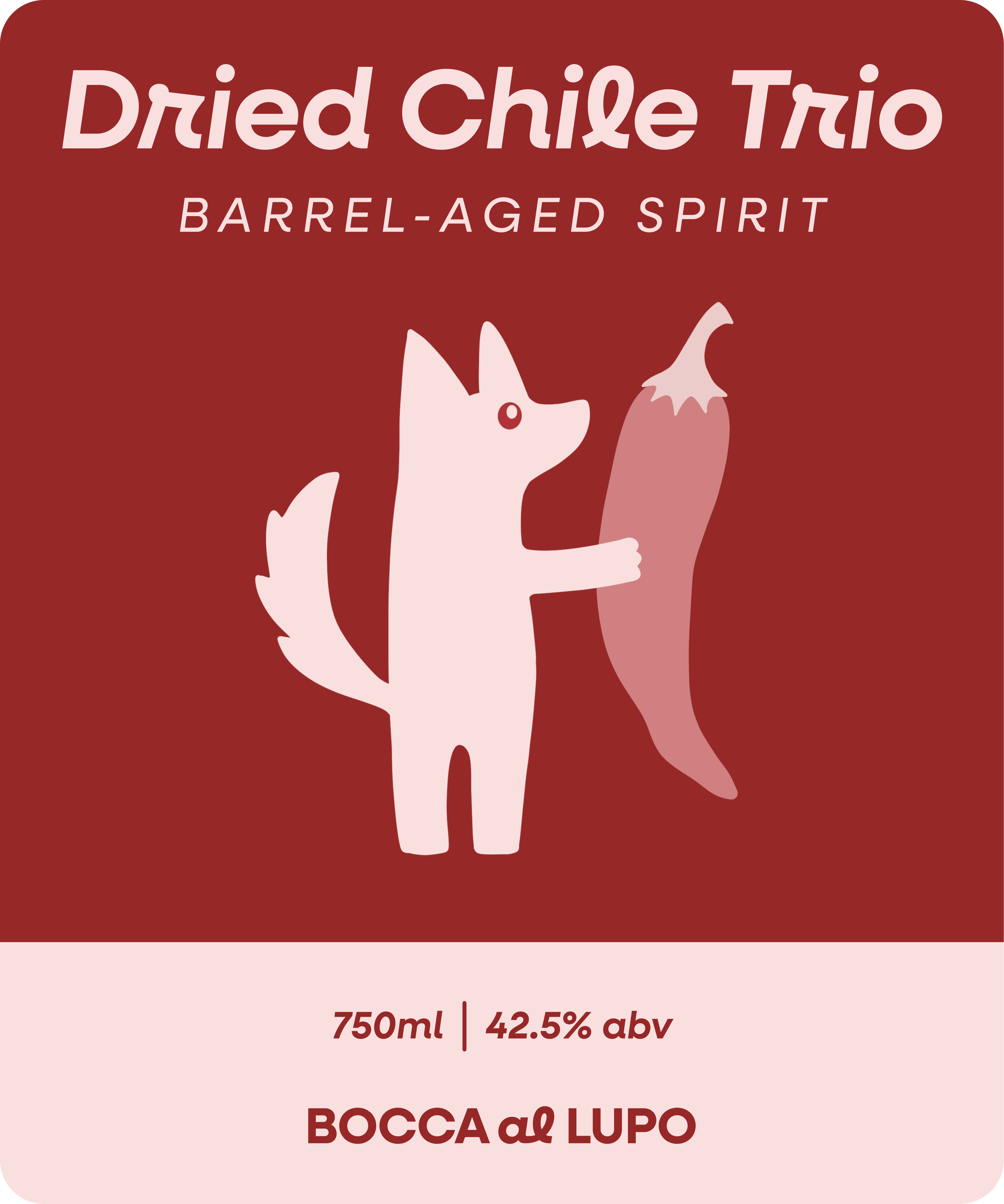
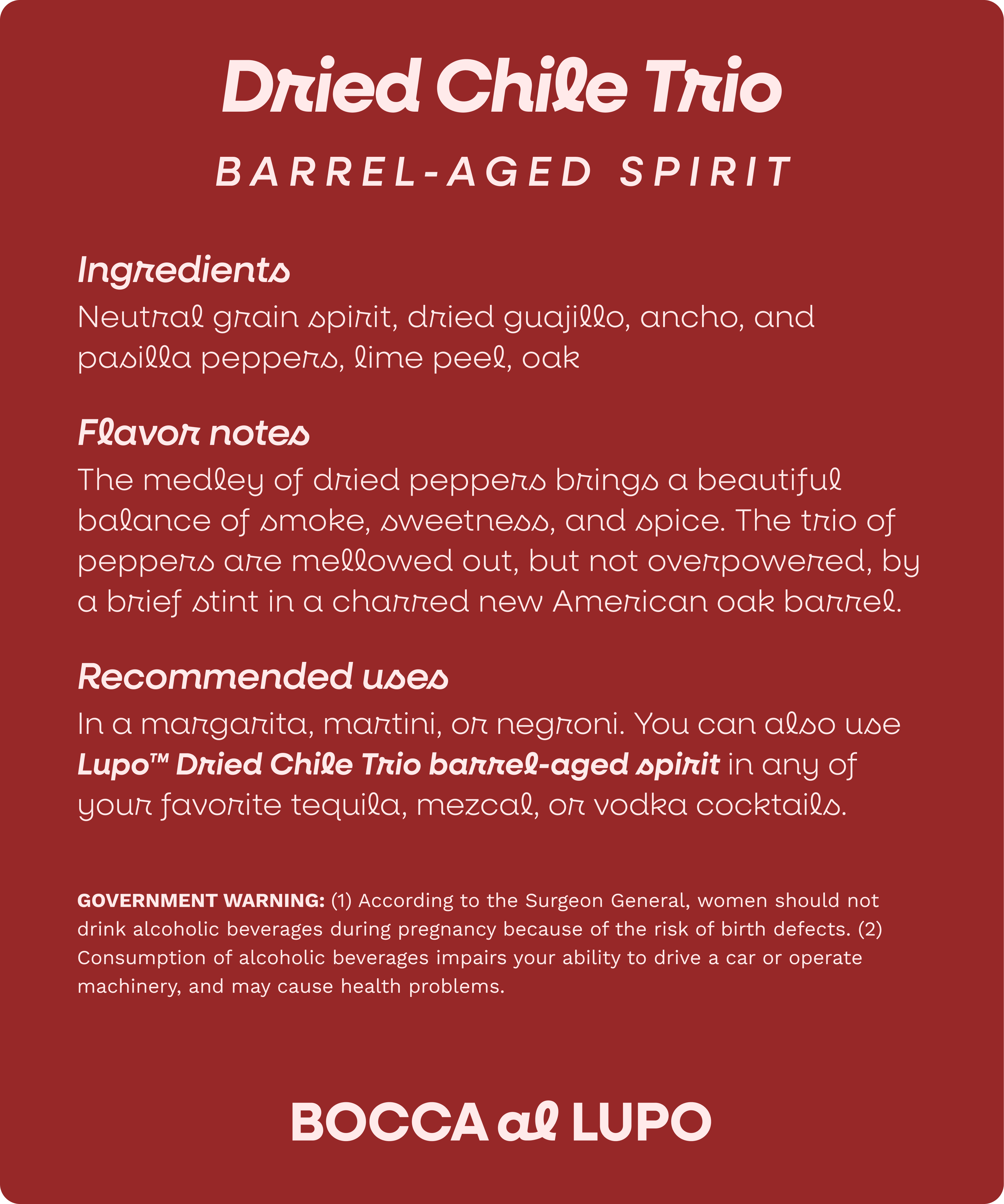

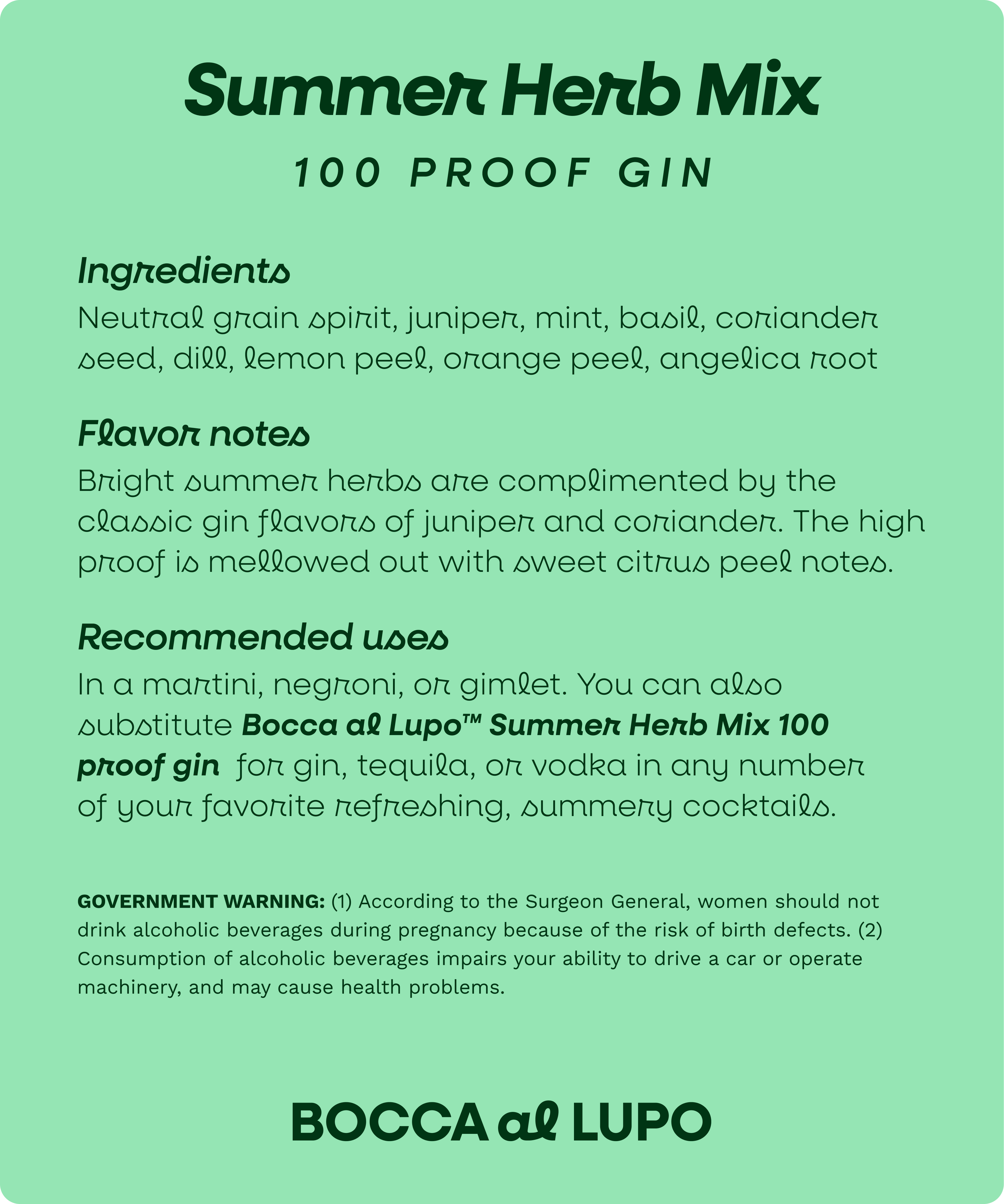
Summer Herb 100 proof gin
Wanting the fresh taste of summer herbs without the hassle of muddling? This is your solution.In a distilling experiment, I found that the fresh flavor of soft herbs carried through really well. As a next step, I developed the perfect summer gin that comprised a medley of basil, mint, dill, oregano, carrot tops, and tarragon–in addition to the lclassic gin notes of juniper, coriander, citrus, and angelica root.
Piñamaro
Inspired by Heirloom’s Pineapple Amaro, this was a first attempt a creating an amaro that doesn’t have a neutral grain spirit base.My first version of Piñamaro was the result of 2 weeks of macerating flash-frozen pineapple, cinnamon, lime leaf, lime peel, pandan, star anise, bay leaf, cardamom, clove, mace, annato, gentian, and sasparilla in 72% ABV mix of Rum Fire, Smith + Cross, and Everclear. The maceration was then diluted to 42%, sweetened at 140g/L of sugar, and bottled in packaging I designed.
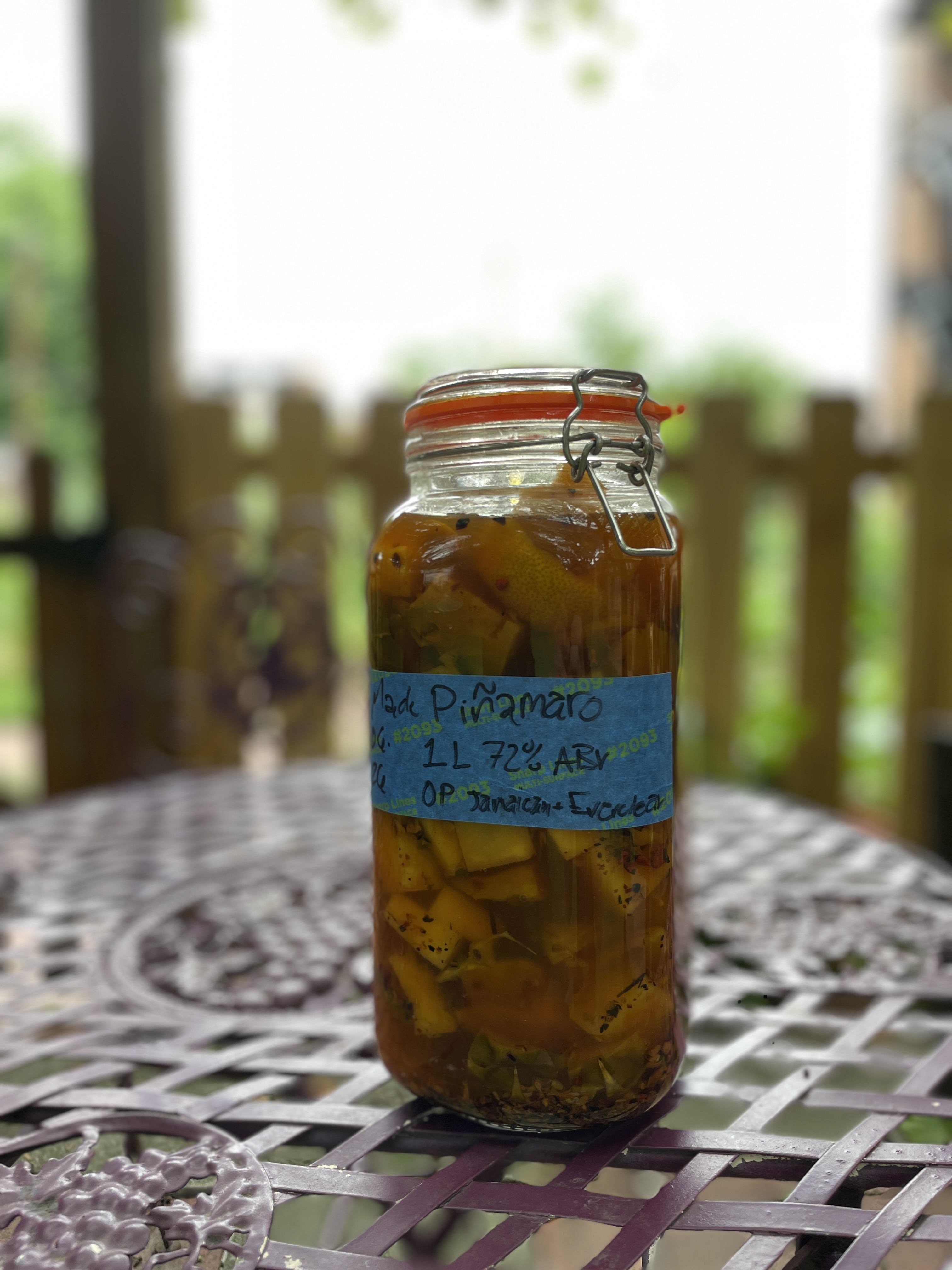
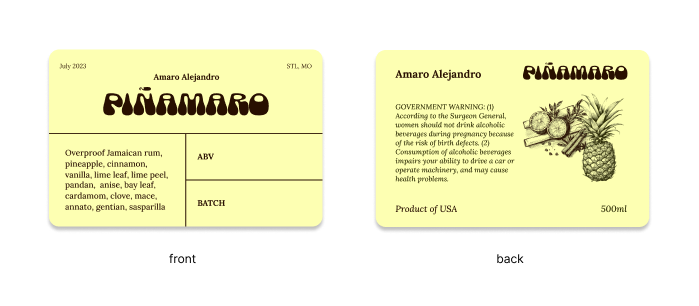


Frankie Fernet
The next attempt in mix-base amaro was spurred by my want to combine Mezcal and Fernet into an approachable entry to both.The same 2 week maceration approach was taken here, using a combination of Banhez Espadín and Barril Mezcal ensamble and everclear (for improved maceration). The main two components were fresh mint and galangal. Taking a secondary seat, in flavor profile, were: sage, lemon peel, orange peel, gentian, cinchona bark, wormwood, and sasparilla. This version was bottled to 27%ABV. The name and packaging took inspiration from my fellow Nixta bartender Kelsie’s aussie/dauchsand puppy Frankie.
HORNS UP Rabarbaro
A rabarbaro that builds on the spice of a bonded Rye Whiskey base to deliver the perfect fall amaro.With “Horns Up” (an ode to my first mentor behind the bar and his love for metal), I also went for maceration. The liquid component was a 65% abv base of Rittenhouse Rye and Everclear. The solid components were fresh rhubarb, orange peel, lemon peel, ninna nanna tea, green + black cardamom, mint, bay leaf, dried artichoke leaf, dandelion root, and wormwood. Bottled at 28% ABV.
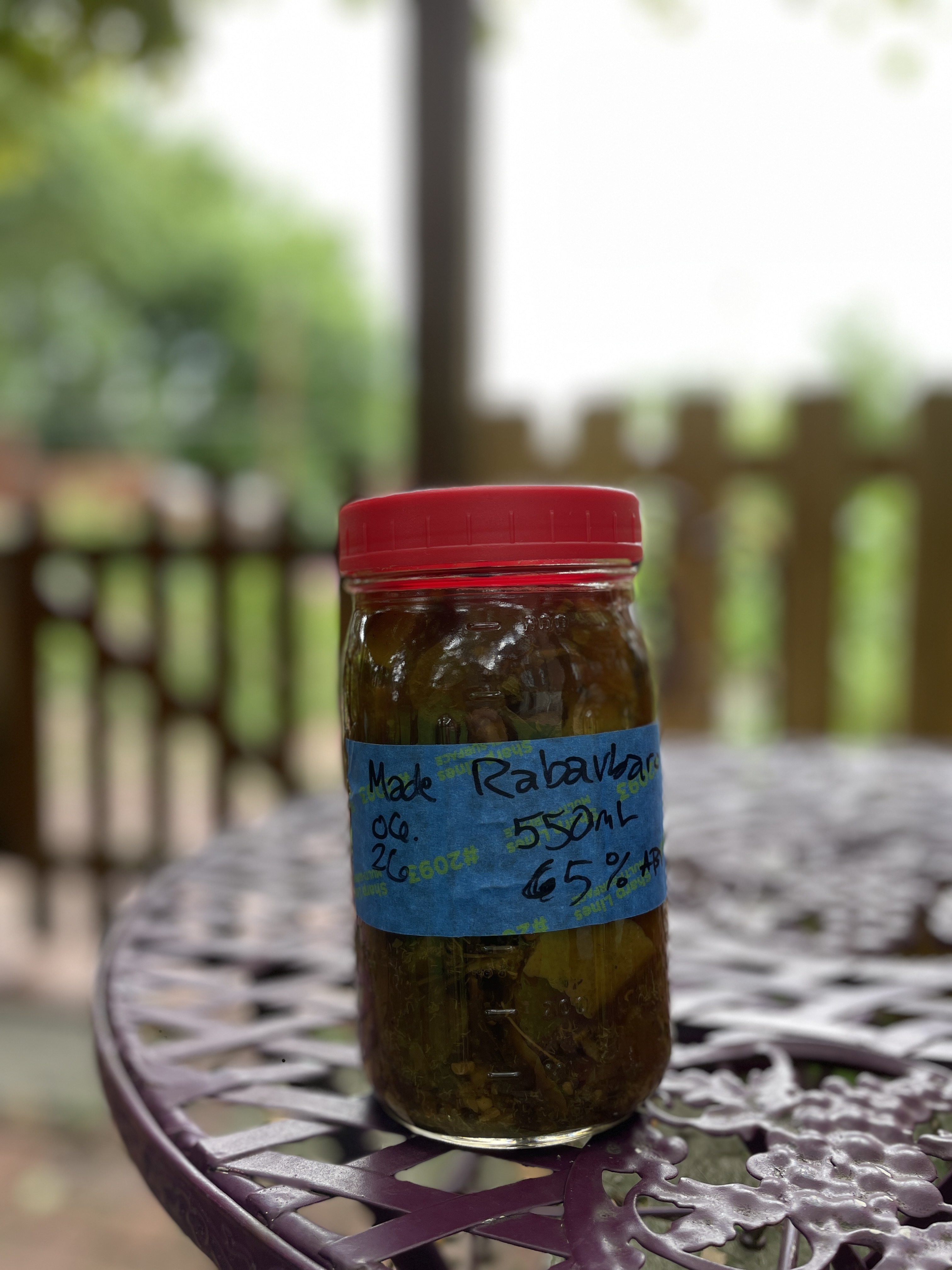

Triple Cherry Liqueur
On a quest to somehow make a better cherry liqueur than Luxardo Maraschino, this was the first step. Not better, but pretty damn good.The three cherries here were meant to create a depth of flavor that captures all, or at least most, of the amazing flavors cherry has to offer. Tart, fresh cherries and their pits were combined with dried cherries, the syrup from maraschino cherries, lemon peel, and anise in a bath of Everclear + OFTD to macerate for 1 month. The resulting liqueur was bottled at 25%, as I wanted to have a slightly stronger, and less sweet liqueur than Luxardo’s take.